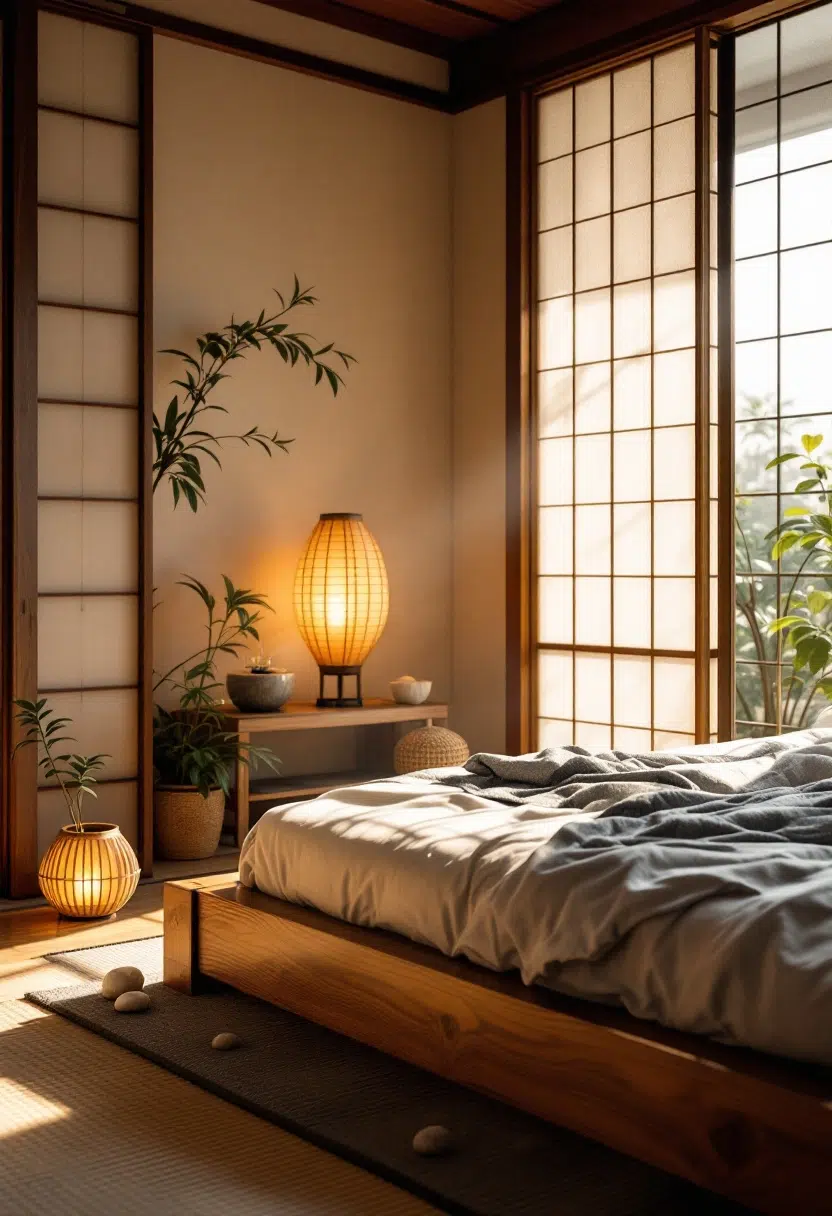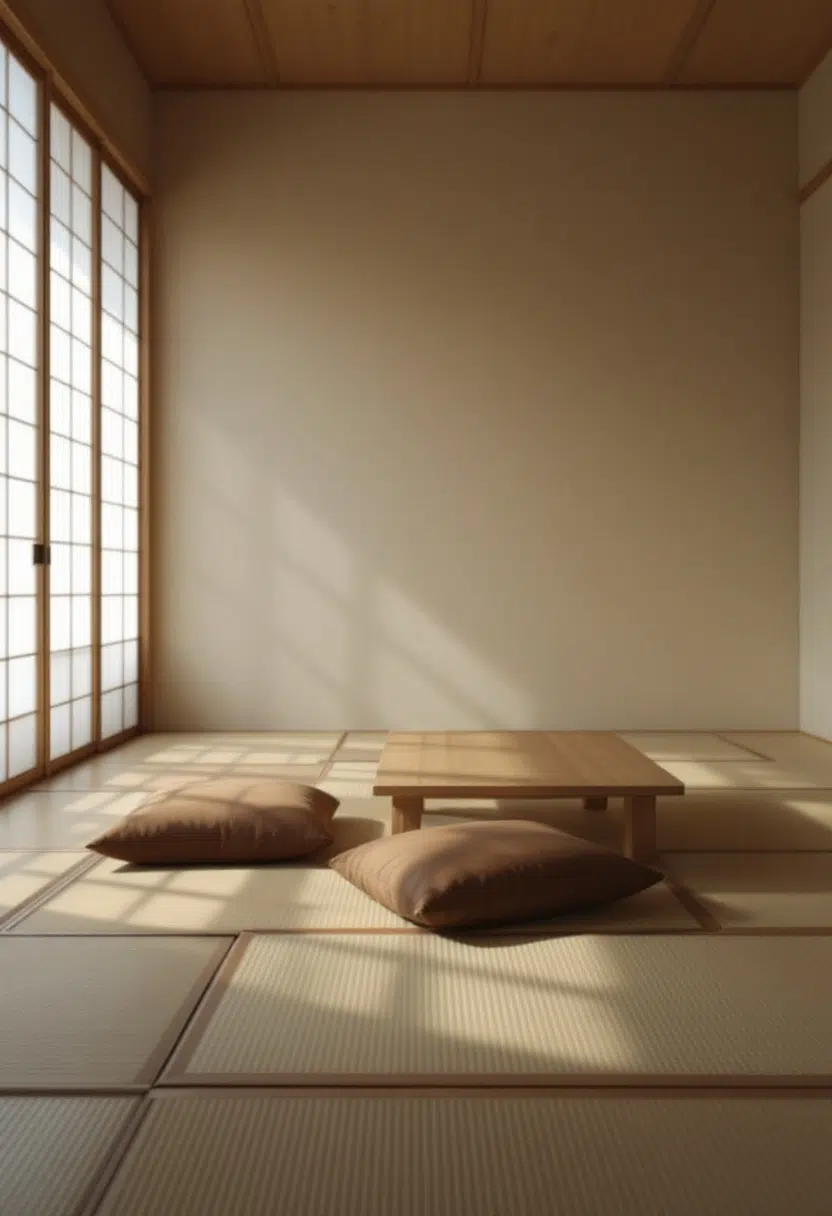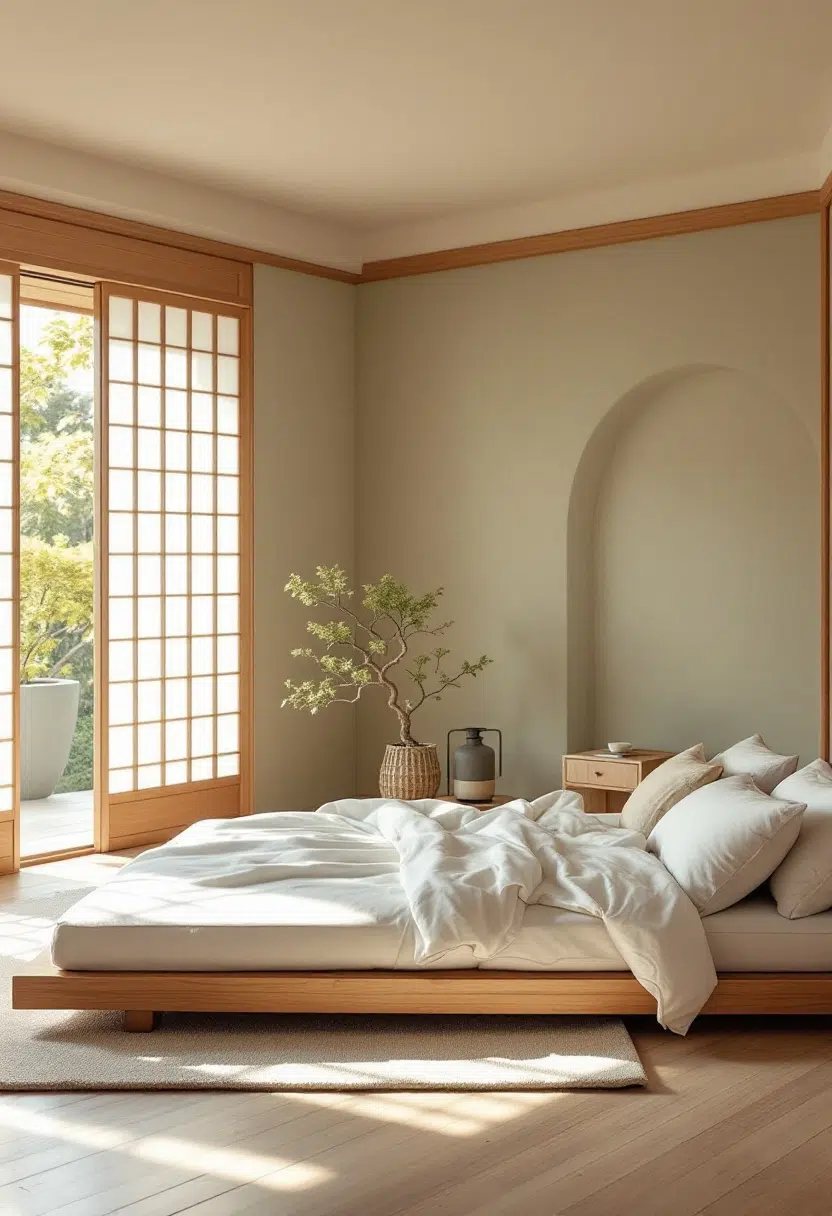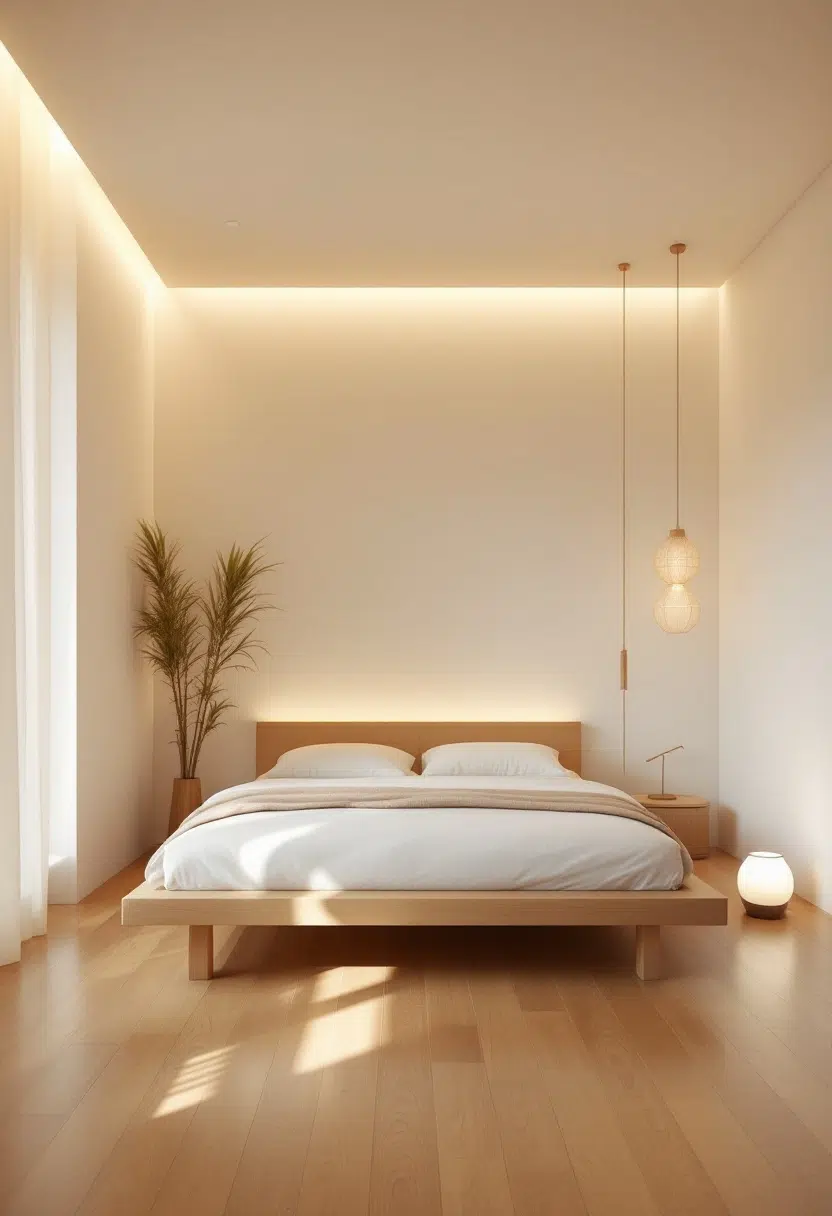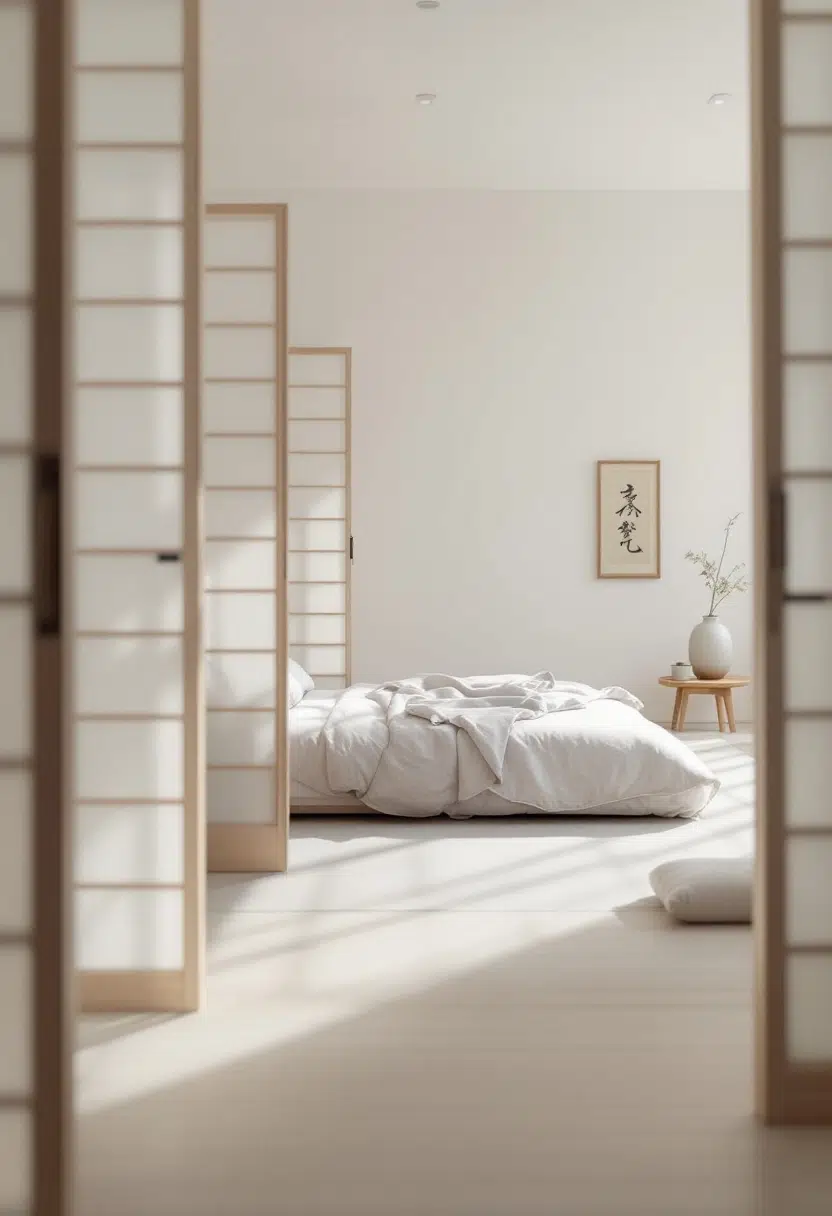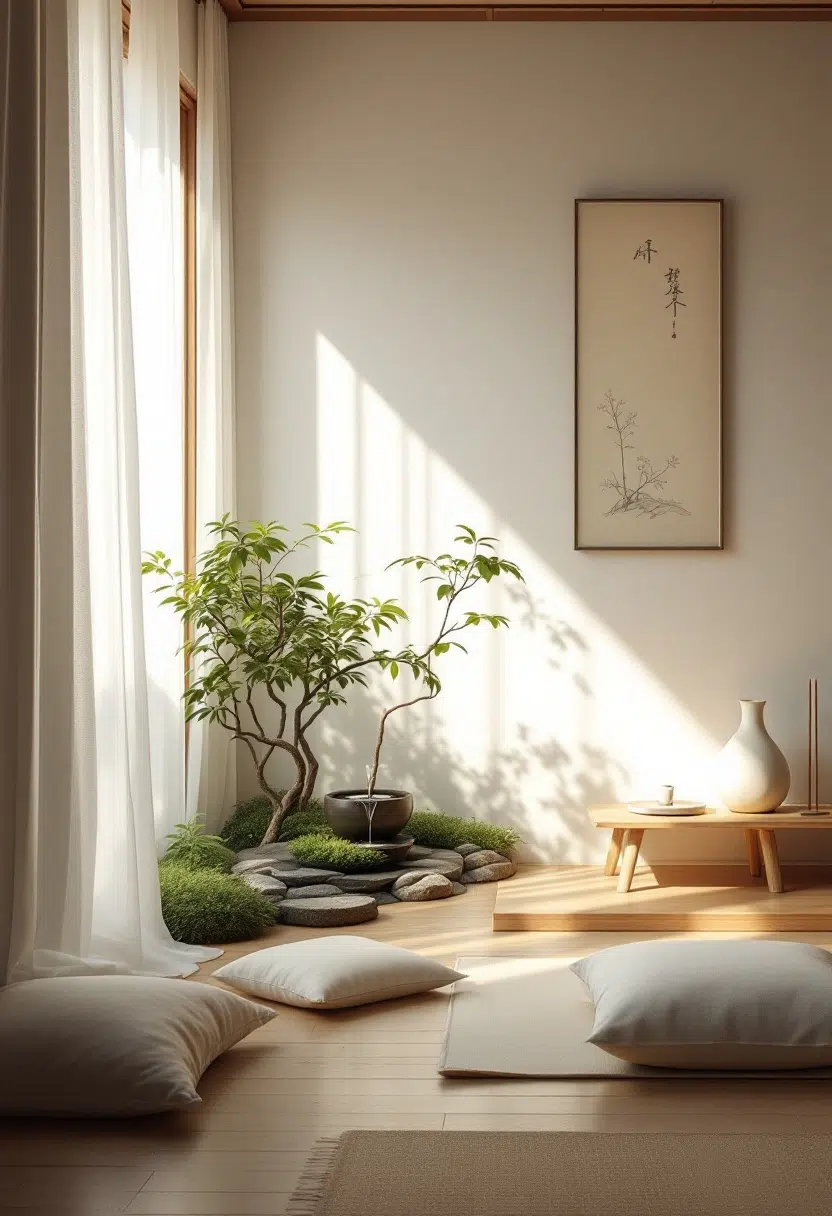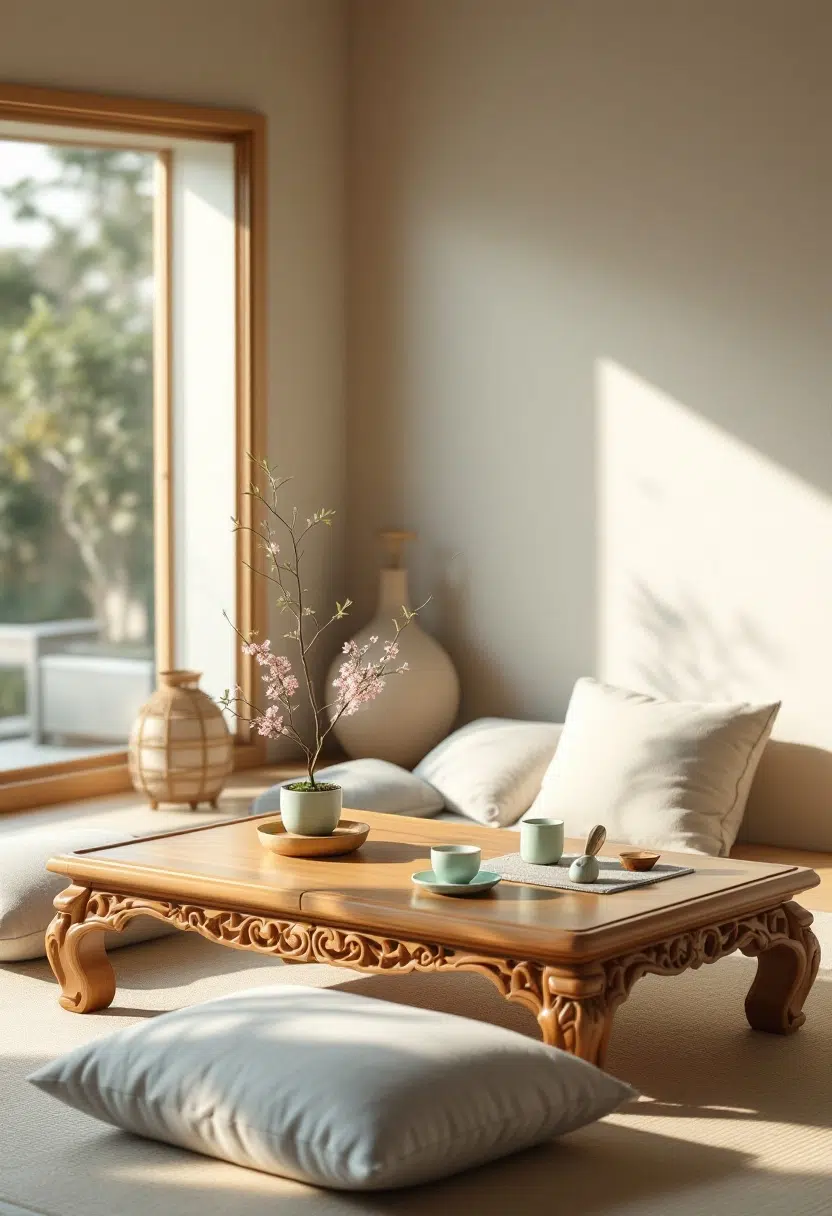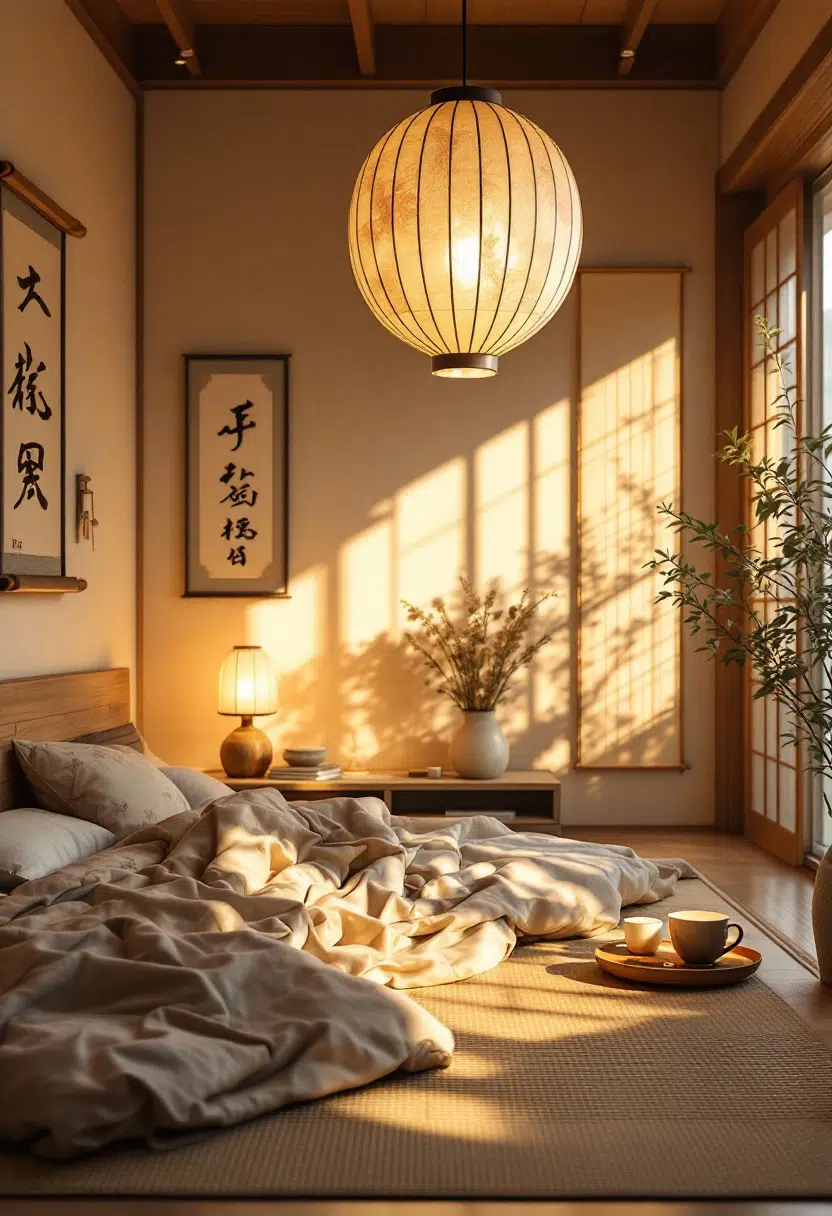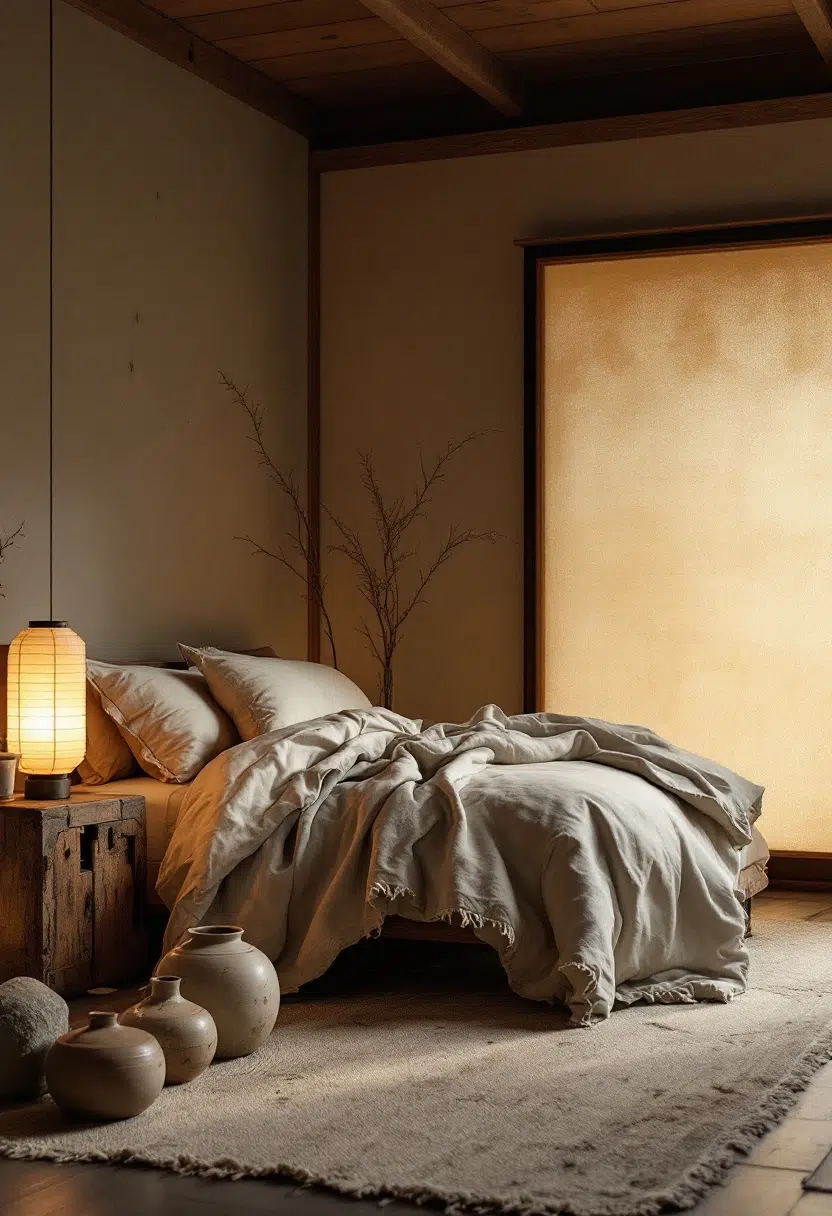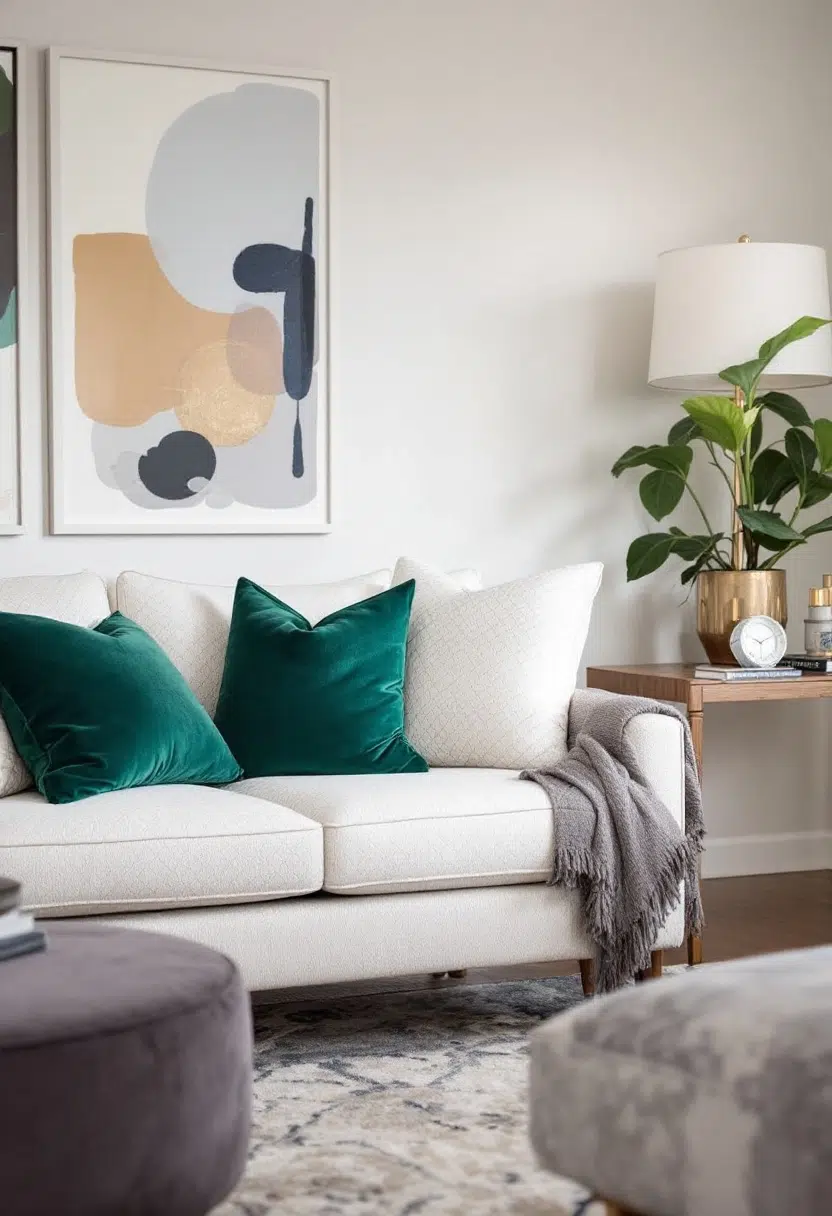Transform Your Bedroom: 12 Japanese Decor Ideas with a Modern Twist
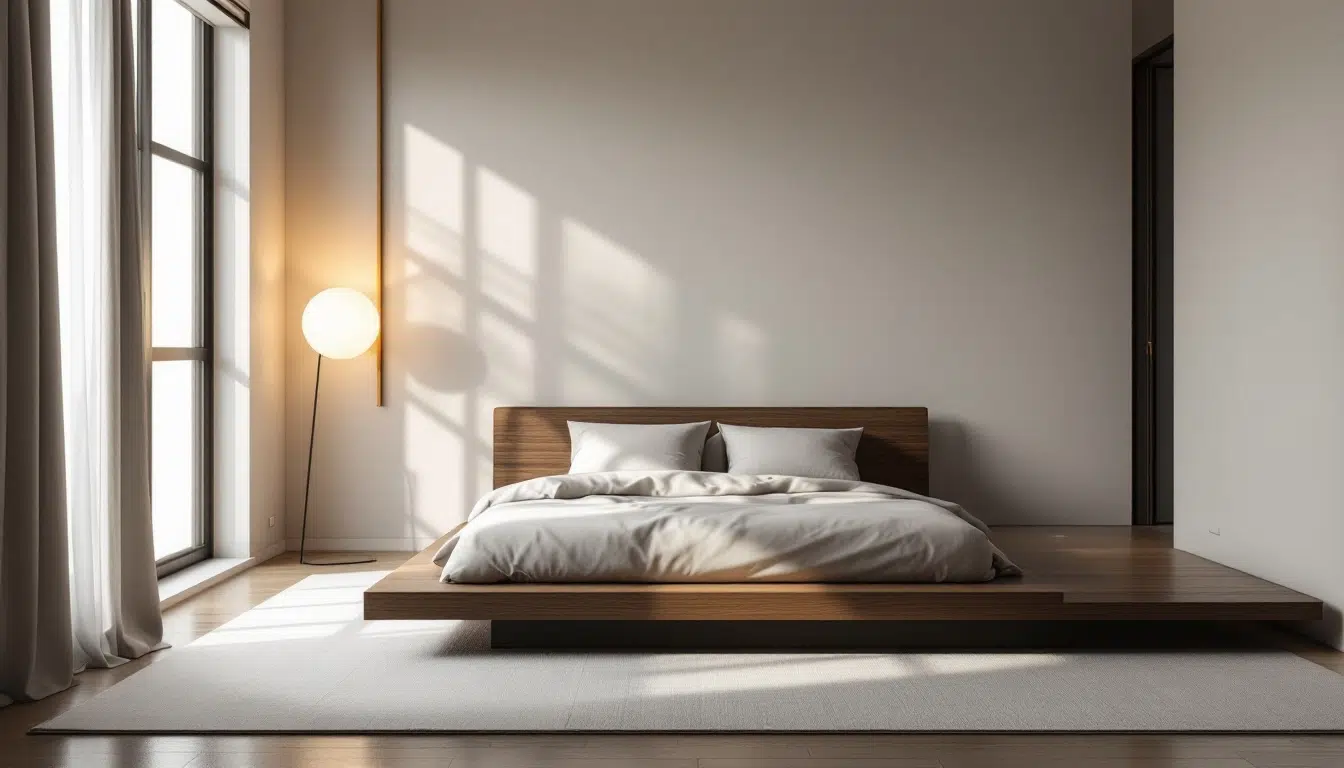
A Japanese bedroom isn’t just a room; it’s a retreat to tranquility and harmony. Discover how you can infuse your space with these serene principles through meticulous decor and thoughtful design. Let’s explore how embracing Japanese aesthetics can transform your bedroom into a peaceful sanctuary, blending simplicity with nature and elegance with function.
Embrace Minimalism
Minimalism is the heart of Japanese interior design, bringing a sense of peace and simplicity to your living spaces. I’ve found that focusing on the essentials lets you create a serene atmosphere in your bedroom. Start by removing items that don’t add value or purpose. Keep only those that contribute to your comfort or aesthetics.
Functionality is key in minimalism. It’s about making your space work for you and using each piece intentionally. A clutter-free environment can make your room feel spacious and calming. Prioritize quality over quantity. Choose furniture and decor that serve a dual purpose, like a bed with built-in storage.
Incorporating minimalism is not just about removing excess, but also about making thoughtful choices. When selecting new pieces, consider their simplicity and functionality. Keep your color palette neutral and soothing, with clean lines and natural materials. This approach forms a perfect foundation for the next chapter on integrating natural elements into your space.
Incorporate Natural Elements
To create a tranquil atmosphere in your bedroom, integrating nature through materials like wood, bamboo, and stone can work wonders. These elements bring an organic touch that aligns perfectly with Japanese design principles. Introducing a wooden bed frame or a bamboo lamp can immediately add warmth and texture, making the space feel soothing and inviting. Focus on the natural grain of the materials to add visual interest without overwhelming the room.
Consider using a stone feature, like a small water fountain or stone pebbles in a plant arrangement, to introduce a calming ambiance. It’s not just about aesthetics; these materials promote a sense of balance and peace. Plus, they offer a timeless beauty that’s both elegant and understated. Using these materials allows you to stay connected to nature, which can help cultivate a serene and restorative environment.
When bringing these materials into your design, think about how they can serve dual purposes. A bamboo ladder can act as both decor and a functional piece for hanging clothes or towels. The key is to be intentional, choosing pieces that will enhance the harmony and simplicity already present in your space. Creating a cohesive look with natural elements can significantly enhance the functionality and vibe of your bedroom.
Utilize Tatami Mats
Tatami mats have been a staple in Japanese homes for centuries, bringing both tradition and functionality. These mats are made from rice straw and covered with woven soft rush grass, offering a natural feel underfoot. They help create a zen-like atmosphere and promote a minimalist living space, perfect for enhancing the tranquility of your modern bedroom.
Integrating tatami mats into your home can be a delightful way to embrace Japanese aesthetics. Use them as flooring to bring warmth and texture to your space. For a unique touch, consider creating a seating area on tatami mats with a low table, adding cushions for comfort. This setup is ideal for relaxing, meditating, or enjoying a casual meal.
By incorporating tatami mats into your bedroom, you can effortlessly combine style with practicality. Not only do they contribute to a serene environment, but they also provide excellent insulation and air purification benefits. Whether you choose to cover your entire floor or just a section, tatami mats are a beautiful addition to any modern living space.
Choose a Futon Bed
Opting for a futon bed in your Japanese-inspired bedroom adds multifunctionality to your space. A futon is space-efficient, allowing you to transform your sleeping area into a living space by day. This adaptability is especially great for those with limited square footage, as it embraces a minimalist style without sacrificing comfort.
When selecting a futon, prioritize quality to ensure both coziness and durability. Look for futons with a solid frame and a thick, comfortable mattress. Materials like cotton and wool are ideal for mattresses to provide excellent support. Choose a design that complements your room’s aesthetic, ensuring your bedroom remains a tranquil retreat.
Integrating a futon into your space effortlessly aligns with Japanese design principles, offering both style and functionality. By doing so, you create a balanced environment, echoing the harmony found in traditional Japanese homes. Transform your bedroom into a versatile sanctuary that’s both inviting and practical.
Select Neutral Color Palettes
In Japanese design, color plays an integral role in crafting a harmonious space. By focusing on neutral tones like whites, browns, and grays, you can create an environment that exudes calmness and simplicity. These shades are perfect for those who crave tranquility in their bedrooms, as they naturally blend with the serene vibes often sought in minimalist decor.
Moreover, neutral colors allow you to accentuate other elements without overwhelming the space. They serve as a backdrop, highlighting the natural wood textures and soft lighting that are hallmarks of Japanese interiors. This choice not only enhances aesthetic appeal but also supports a balanced atmosphere, making it easier to relax and unwind after a busy day.
Integrate Shoji Screens
Shoji screens are a beautiful way to introduce flexibility into your bedroom. These translucent screens gently diffuse light, creating a serene and fluid atmosphere that can help separate different areas or create a cozy nook. They work well with the harmonious vibe of neutral colors, adding depth without disrupting the calmness of your space.
Beyond their aesthetic appeal, shoji screens are incredibly functional. They can act as room dividers, offering privacy without blocking out the natural light that is so cherished in Japanese design. Their lightweight nature means they’re easy to move, perfect for renters or those who enjoy rearranging their space to keep things fresh.
Combining shoji screens with your decor helps create a balanced and tranquil environment. The interplay of light and shadow through the screens adds an ethereal quality, reflecting your dedication to a practical yet stylish home. Embrace the elegance and utility of shoji screens to make your bedroom a true sanctuary.
Incorporate Zen Elements
Exploring the concept of Zen in your bedroom can transform it into a sanctuary of peace and tranquility. Embrace the natural simplicity and balance inherent in Zen philosophy by incorporating elements like small indoor gardens. A few carefully chosen plants can bring a breath of fresh air and establish a connection to nature, mirroring the calming beauty found in traditional Japanese interiors.
Create a meditation corner to encourage relaxation and mindfulness. A simple set-up with a comfortable cushion, a small altar, or a calming piece of art sets the tone for introspective practices, providing an escape from the daily hustle. Choose decor that embodies serenity—soft colors, natural materials, and minimalistic designs work together to cultivate a calming environment.
Let natural light flow in, highlighting the beauty of simplicity. Use light curtains or sheer blinds to maintain an open, airy feel. The subtle play of light and shadow can enhance the sense of peace in your space. Integrating these Zen elements not only complements Japanese style but also invites a sense of calm and balance into your life.
Add Sliding Doors
Sliding doors, or *shoji*, are a hallmark of Japanese design, marrying practicality with aesthetics. They serve as elegant solutions to save space, perfect for modern homes where every inch matters. By sliding rather than swinging, these doors facilitate a smooth, effortless opening and closing, promoting a sense of fluidity. This aspect is key in fostering a seamless transition between spaces, allowing for a dynamic yet restful ambiance, resonating with your busy lifestyle.
These doors also beautifully align with a minimalist decor style, emphasizing simplicity and clean lines. They’re typically composed of a wooden frame with translucent paper, which gently diffuses light across the room, enhancing a tranquil atmosphere. This design element invites harmony, making your bedroom a serene retreat from the outside world. Such features add a touch of subtle sophistication, appealing to your sense of style and functionality.
By incorporating sliding doors, you add a versatile design feature transforming your bedroom into a more inviting and personal sanctuary. They allow for creative arrangements, like concealing cluttered areas or connecting spaces for a larger room feel. This not only aligns with the aesthetic functionality you value but also encourages a more organized and peaceful living environment.
Create a Tea Corner
Imagine creating a serene space within your bedroom dedicated solely to relaxation—a tea corner. By incorporating a low table and a few comfy cushions, you can design a cozy nook that invites moments of peace and reflection. This simple yet effective setup enhances your bedroom’s tranquility, allowing you to savor morning or evening teas in a space that feels intimate and personal.
Begin by selecting a low-profile table that complements your bedroom’s aesthetic. Pair it with plush cushions that provide comfort and encourage you to sit and unwind. This small addition not only offers a practical spot for enjoying your favorite brews but also adds a layer of charm and serenity reminiscent of traditional Japanese living spaces.
For the finishing touch, consider placing a small plant or an arrangement of tea-making essentials on the table. This will not only enhance the decorative appeal but also ensure everything you need is within arm’s reach. Introduce this mindful ritual into your day, making the tea corner a staple of tranquility and a gentle pause in your routine.
Use Soft Lighting
When transforming your bedroom into a peaceful sanctuary, lighting plays a key role. Soft lighting mimics the calm essence of nature, creating a welcoming atmosphere. Consider using lanterns or floor lamps to cast a gentle glow. They enhance the room’s comfort without overpowering it, perfect for moments of relaxation at the end of a busy day.
Integrate multiple light sources to control brightness depending on your mood. Combine a dimmable lamp with lanterns to achieve this effect. It’s a subtle way to shift from day to night seamlessly. Remember, the right lighting transforms your space from functional to serene, aiding in relaxation and reflection.
Choosing the right bulbs also makes a difference. Opt for warm white bulbs to achieve that cozy ambiance which complements other soothing elements in your Japanese-inspired retreat. Not only does soft lighting help unwind, but it also enhances decor like rustic textiles and handmade pieces, setting the perfect stage for embracing Wabi-Sabi in your design journey.
Incorporate Wabi-Sabi
Embracing the concept of Wabi-Sabi in your Japanese bedroom means finding beauty in imperfection and impermanence. It’s about appreciating the charm of natural wear and the subtle nuances in handmade pieces. When choosing decor, look for items that tell a story of time’s passage, like a ceramic vase with an uneven glaze or wood with visible grains. This aesthetic complements the calming lighting previously discussed, creating a balanced space.
To embody Wabi-Sabi, focus on selecting decor pieces that feel authentic and organic. Consider adding handmade pottery, rustic textiles, or woven baskets. These items, with their textures and earthy tones, can help your space feel both grounding and personal. Emphasize materials that showcase their natural state, whether it’s linen with frayed edges or a rug with a slightly faded pattern.
- Choose imperfect, handcrafted decor for a unique touch.
- Incorporate rustic elements like wood and stone.
- Celebrate the beauty of natural wear and patina.
By incorporating these elements, you can create a room that not only looks serene but also feels relaxed and lived-in. This approach is a great transition to our next focus on personalization, allowing your individual style to shine through art and decor while maintaining this aesthetic.
Personalize with Art and Decor
Bringing a touch of your unique personality to your Japanese bedroom is all about making art and decor work for you. Consider incorporating elements that reflect who you are while seamlessly blending with the minimalist Japanese aesthetic. Think carefully about choosing items like artwork, ceramics, and textiles that amplify your space’s character, without overwhelming it. The goal is to create an inviting vibe that resonates with your style.
For artwork, select pieces that speak to you, yet maintain a sense of simplicity. Japanese landscapes or understated abstract pieces can mesh well with your room’s theme. When it comes to ceramics, opting for handcrafted pieces can add texture and warmth. Think of delicate vases or planted succulents that provide a simple, natural element, embodying a serene and harmonious atmosphere.
Textiles can play a crucial role in personalizing your space. Choose materials like linen or cotton for bed covers and curtains, with subtle patterns that reflect Japanese motifs. Balance is key here, so stick to a soft palette to maintain tranquility. With the right touches, your bedroom will not only be a sanctuary of calm but also a reflection of your own style and life experiences.
Creating a Japanese-inspired bedroom allows you to blend tradition with modern comfort. Embrace minimalism, natural elements, and soft lighting to foster tranquility. Customize with art and Wabi-Sabi elements to reflect your style. This approach transforms your space into a serene retreat, perfectly balancing aesthetics and practicality—inviting relaxation and personal expression.


